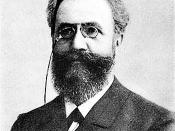-Abstract-
The aim of this of this study was to investigate the accuracy of long term memory for a common object and more precisely to examine the differences between memory recognition and recall. Six participants took part in the experiment, three were assigned to the recognition task and three to the recall. The recognition group were required to answer yes or no to a series of questions relating to specific features of a N.Z. 50 cent coin they were also asked to rate how confident they were that their answers were correct. The recall group were asked to draw the features of both sides of the coin. The hypotheses that the recognition group would score higher than the recall group was supported as was the theory that the heads side of the coin would prove easier for both groups to remember than the tails side.
It was concluded that deep processed memories, as in the way that certain distinguishing features of a coin or other everyday familiar objects are easier to retrieve than details of the same object that do not hold as much relevance and thus shallowly processed within the memory.
Most of us can recognise everyday objects, people we have met or other everyday aspects involving memory with little or no though at all. However when required to remember specific details of an item that most would be extremely familiar with it becomes apparent that memory is not as simple as one may think. A series of studies conducted by Nickerson and Adams (1979) asked how detailed and accurate is ones memory for a common object. Using the visual details of the US penny, their experiment showed that among their participants, those in the group assigned to memory recognition were superiour to those assigned to memory recall.


